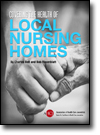The Seattle Times‘ Michael Berens takes a deep look at the industry of “free” elder placement services that began in Seattle and has spread nationwide. The rapidly growing companies offer to help families desperate to find a place for an ailing relative and don’t charge anything. The catch? They only place seniors in facilities that are willing to pay for the referrals.
In addition, most placement companies do not screen homes for past violations. As a result, many have referred seniors to facilities with documented histories of substandard care, including fatal neglect.
In 143 cases over the past three years, seniors were victimized after companies placed them in adult family homes, or other long-term- care facilities, that had a record of serious violations, a Times analysis of Department of Social and Health Services documents reveals.
For the proprietors, such referrals don’t come cheap.
At stake are commissions worth thousands of dollars for every senior. To fill an empty bed, adult-home owners pay placement agencies the equivalent of one month’s rent, on average about $3,500. Large placement companies adopt strict quotas on employees to maintain speed and volume.
Berens tells the tale of one broker “trolling” the parking lot of a rehabilitation center in a search for referrals and about the owner of several adult family homes who was inundated with faxes containing private information about seniors looking for care.
Many such organizations really do have the patients’ best interests at heart, as Berens points out, but he doesn’t shy away from the fact that others are motivated only by profits. Compounding the problem is the lack of oversight and regulation of the process.
Berens previously reported on deaths in adult homes that indicated neglect or abuse but were not reported to the state or investigated.
 Slim guide:
Slim guide:
Covering the Health of Local Nursing Homes
This reporting guide gives a head start to journalists who want to pursue stories about one of the most vulnerable populations – nursing home residents. It offers advice about Web sites, datasets, research and other resources. After reading this book, journalists can have more confidence in deciphering nursing home inspection reports, interviewing advocacy groups on all sides of an issue, locating key data, and more. The book includes story examples and ideas.
AHCJ publishes these reporting guides, with the support of the Robert Wood Johnson Foundation, to help journalists understand and accurately report on specific subjects.

Other resources
- Aging Nation: Troublesome Health Care Issues
- Headlines an advocate for seniors would like to see
- The impact of aging upon health care
- Covering nursing homes and other issues of aging
- How will retiring boomers affect the national health agenda?
- You Can Run, but You Can’t Hide: Policy and Problems in Long-Term Care
- Biology of Aging: Sources and Resources




